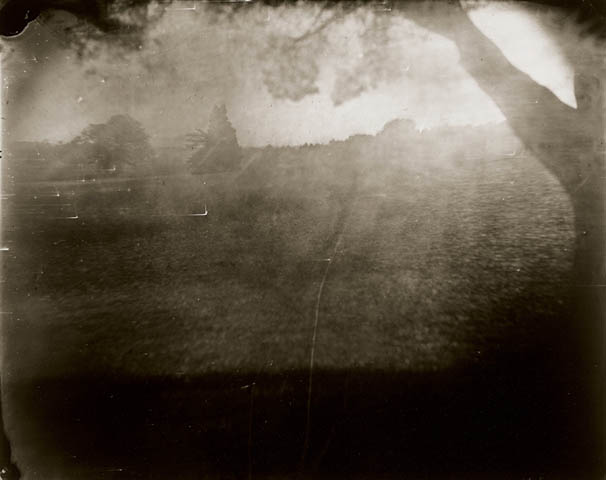 "Henry"
"Henry" by Olivier Laude
 "Yossef's Buck"
"Yossef's Buck" by Olivier Laude
Laude is, surprisingly, by profession a freelance graphic designer. However, on his site you are immediately taken to a gallery of 37 images, including the ones I posted above. In contrast to his serious graphic design work, these portraits, which include many of the same models as different characters (as you can see, "Yossef" and "Henry" are quite obviously the same person) are hilarious, beautiful, and mildly creepy at the same time. I'm not quite sure what Laude was going for with these portraits, but I think they are hysterical, which is something I don't always appreciate in artwork.
 "Dermit, Kilkeny, Ireland" (2007)
"Dermit, Kilkeny, Ireland" (2007) by Geordie Wood
 "Pamela Chen, Newport, RI" (2007)
"Pamela Chen, Newport, RI" (2007) by Geordie Wood
Geordie Wood works in fashion and sort of journalistic portraiture. A lot of Wood's portraits that I found were taken for magazines and other commissioned jobs, but it still seems very apparent that he considers each photograph that he presents a work of art, even if it is for a job he's hired to do. The image titled
"Pamela Chen, Newport, RI" is probably my favorite of his. The simple silhouette in contrast to the rich textures in the floor and curtains is haunting and beautiful. I'd definitely recommend looking at more of Geordie Wood's work.
 "untitled" (2004)
"untitled" (2004) by Tierney Gearon
 "Untitled" (2004)
"Untitled" (2004) by Tierney Gearon
Both of the above photographs are from Tierney Gearon's
"The Mother Project". This series is a conglomeration of uncomfortable, sad, and beautiful photographs of her family members and herself. Tierney works under the belief that all of her photographs are of herself.

37 PAINTING (HYGIEIA, THE GODDESS OF HEALTH, BY KLIMT), 2007-2010
 “The Bride with a Nô Mask, Self-portrait” (2005)
“The Bride with a Nô Mask, Self-portrait” (2005) by Kimiko Yoshida.
“I take my makeup from the Japanese technique of doran, the white paint with which geishas and maïkos traditionally cover their faces,” Yoshida writes. “Doran tends only to erase the singular face, to dissimulate it by covering it with white, to remove any particularities.”
I love the way Yoshida incorporates the idea of doran make-up techniques erasing any unique qualities of the face. This is an interesting idea to me, considering portraits usually fit the fact that human facial features are so unique to each and every one of us.
The top portrait is from a series of self-portraits that interpret or recreate famous works of art. I recommend checking out the whole series, she created very interesting costumes/masks for all of them.

















































